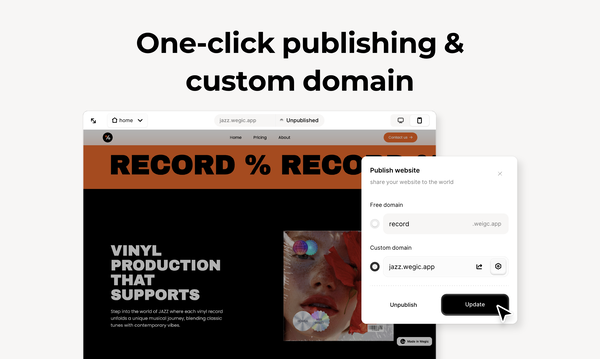Getting Started with Web Design in Dallas
Web Design in Dallas Solutions
Web Design in Dallas
Creating a membership site can be a great way to generate recurring revenue and build a community around your content or offerings. To create a successful membership site, you need a reliable website builder that is specifically designed for membership sites. In this article, we will explore some of the best website builders for membership sites and discuss their features and benefits.

Web Design in Dallas FAQ
Web Design in Dallas
1. Text Editors
One of the most basic tools for web development is a text editor. Text editors are used to write and edit code for websites. There are many different text editors available, each with its own set of features and capabilities. Some popular text editors include Sublime Text, Atom, and Visual Studio Code. These text editors offer features like syntax highlighting, code completion, and easy integration with other tools.
2. Integrated Development Environments (IDEs)
Integrated Development Environments (IDEs) are comprehensive tools that provide everything a developer needs to build websites. IDEs typically include a text editor, debugger, compiler, and other tools for building and deploying websites. Some popular IDEs for web development include IntelliJ IDEA, Eclipse, and NetBeans. These tools are ideal for developers working on complex projects that require advanced features and capabilities.
3. Version Control Systems
Version Control Systems are essential tools for tracking changes to code and collaborating with other developers. Version Control Systems like Git allow developers to track changes to their code, revert to previous versions, and merge code from different developers. Git is a widely used version control system that is easy to learn and offers powerful features like branching and merging.
4. Browser Developer Tools
Browser Developer Tools are built-in tools that allow developers to inspect and debug websites directly in the browser. These tools provide information about the structure, layout, and performance of websites. Browser Developer Tools also allow developers to test and optimize websites for different devices and screen sizes. Popular browser developer tools include Chrome DevTools, Firefox Developer Tools, and Safari Web Inspector.
5. Package Managers
Package Managers are tools that help developers manage dependencies and libraries in their projects. Package Managers like npm (Node Package Manager) and Yarn allow developers to easily install, update, and remove libraries in their projects. Package Managers also help developers manage different versions of libraries and ensure that all dependencies are up to date.
6. Task Runners
Task Runners are tools that automate repetitive tasks in the web development process. Task Runners like Gulp and Grunt allow developers to automate tasks like minification, concatenation, and compiling code. Task Runners save time and effort by streamlining the development process and making it easier to build and deploy websites.
7. CSS Preprocessors
CSS Preprocessors are tools that extend the functionality of CSS by adding features like variables, mixins, and nesting. CSS Preprocessors like Sass and Less help developers write more organized and maintainable CSS code. These tools make it easier to style websites and ensure consistency across different pages and components.
8. Code Editors
Code Editors are specialized tools for writing and editing code. Code Editors like CodePen and JSFiddle provide a lightweight and easy-to-use environment for writing HTML, CSS, and JavaScript code. Code Editors are ideal for quick prototyping and testing code snippets before integrating them into larger projects.
9. Performance Monitoring Tools
Performance Monitoring Tools help developers identify and fix performance issues on websites. Tools like Lighthouse, PageSpeed Insights, and WebPageTest analyze websites and provide recommendations for improving performance. Performance Monitoring Tools help developers optimize websites for speed, responsiveness, and user experience.
10. Cross-Browser Testing Tools
Cross-Browser Testing Tools help developers ensure that websites look and work correctly in different web browsers. Tools like BrowserStack and CrossBrowserTesting allow developers to test websites on multiple browsers and devices simultaneously. Cross-Browser Testing Tools help developers identify and fix compatibility issues that may arise when users access websites from different browsers and devices.
In this article, we will explore the process of web application development, including the key steps involved, the technologies used, and the best practices for creating a successful web application.
Key Steps in Web Application Development:
1. Planning and Requirements Gathering:
The first step in web application development is to gather requirements and define the scope of the project. This involves understanding the needs of the end-users, identifying key features and functionalities, and setting goals for the project. During this phase, it is important to collaborate with stakeholders to ensure that the project meets their expectations and aligns with the overall business objectives.
2. Design and Wireframing:
Once the requirements have been gathered, the next step is to create a design for the web application. This involves wireframing, which is a visual representation of the layout and structure of the application. The design should be user-friendly, visually appealing, and intuitive to navigate. It is important to consider factors such as responsive design, accessibility, and usability in the design phase.
3. Development:
The development phase involves writing code to build the web application based on the design and requirements gathered earlier. Developers use programming languages such as HTML, CSS, and JavaScript to create the front-end of the application, while back-end development involves using server-side languages such as PHP, Ruby, or Python to handle the logic and data processing.
4. Testing and Quality Assurance:
Once the web application is developed, it is important to conduct thorough testing to ensure that it functions correctly and meets the specified requirements. This involves testing for usability, performance, security, and compatibility across different devices and browsers. Quality assurance is essential to identify and fix any bugs or issues before the application is launched.
5. Deployment and Maintenance:
After testing is complete, the web application is deployed to a server or hosting platform where it can be accessed by users. It is important to monitor the performance of the application and make updates as needed to ensure that it remains secure, functional, and up-to-date. Regular maintenance is key to the long-term success of a web application.
Technologies Used in Web Application Development:
There are a wide range of technologies that can be used in web application development, depending on the requirements of the project. Some of the most popular technologies include:
– Front-end frameworks such as React, Angular, and Vue.js, which are used to build interactive user interfaces.
– Back-end frameworks such as Ruby on Rails, Django, and Express.js, which provide the structure and functionality for the back-end of the application.
– Databases such as MySQL, MongoDB, and PostgreSQL, which are used to store and manage data for the application.
– Cloud services such as AWS, Microsoft Azure, and Google Cloud Platform, which provide scalable and flexible infrastructure for web applications.
– API services such as REST and GraphQL, which allow web applications to communicate with external systems and services.
Best Practices for Web Application Development:
To ensure the success of a web application, it is important to follow best practices throughout the development process. Some key best practices include:
– Following a structured development process, including planning, design, development, testing, and deployment.
– Implementing security measures to protect the application from cyber threats and data breaches.
– Using responsive design to ensure that the application is accessible and functional across different devices and screen sizes.
– Optimizing performance to improve the speed and efficiency of the application.
– Conducting usability testing to gather feedback from users and make improvements to the application.
– Regularly updating and maintaining the application to fix bugs, add new features, and stay current with technology trends.

Web Design in Dallas Solutions
Web Design in Dallas
In today’s digital age, having a visually appealing and user-friendly website is crucial for the success of any business. A well-designed website can help attract new customers, build credibility, and increase conversion rates. However, designing a website is not as simple as it may seem. It requires a strategic and systematic approach to ensure that the final product meets the needs and expectations of both the business and its target audience. In this article, we will discuss the website design process in detail, outlining the key steps involved in creating a successful website.
Step 1: Define the Purpose and Goals
The first step in the website design process is to clearly define the purpose and goals of the website. This involves identifying the target audience, understanding their needs and preferences, and determining the desired outcomes for the website. For example, is the website meant to generate leads, drive sales, provide information, or showcase products and services? By having a clear understanding of the purpose and goals of the website, you can better tailor the design and content to meet these objectives.
Step 2: Conduct Research
Once the purpose and goals of the website have been defined, the next step is to conduct research. This involves analyzing the competition, researching industry trends, and gathering insights into the preferences and behaviors of the target audience. By conducting thorough research, you can gain a better understanding of what works and what doesn’t in your industry, helping you make informed design decisions.
Step 3: Create a Wireframe
After conducting research, the next step in the website design process is to create a wireframe. A wireframe is a visual representation of the layout and structure of the website, showing the placement of various elements such as navigation menus, headers, footers, and content sections. Creating a wireframe allows you to plan the overall design and functionality of the website before moving on to the visual design phase.
Step 4: Design the Visual Elements
Once the wireframe has been finalized, the next step is to design the visual elements of the website. This involves creating a visually appealing and consistent design that reflects the brand identity and resonates with the target audience. Elements such as color scheme, typography, imagery, and layout are carefully considered to create a cohesive and attractive design that conveys the desired message and engages users.
Step 5: Develop the Website
After the visual design has been approved, the next step is to develop the website. This involves coding the design into a functioning website using HTML, CSS, and other programming languages. During the development phase, the website is tested for functionality, responsiveness, and compatibility across different devices and browsers to ensure a seamless user experience.
Step 6: Test and Optimize
Once the website has been developed, it is essential to test and optimize its performance. This involves conducting usability tests to identify any usability issues, testing load times to ensure fast page speeds, and optimizing the website for search engines to improve visibility and accessibility. By testing and optimizing the website, you can ensure that it meets the needs and expectations of users, leading to better engagement and conversions.
Step 7: Launch and Monitor
The final step in the website design process is to launch the website and monitor its performance. This involves deploying the website to a live server, promoting it to the target audience, and tracking key metrics such as traffic, engagement, and conversions. By monitoring the performance of the website, you can identify areas for improvement and make informed decisions to optimize its effectiveness over time.


